The Optimal and Economic Planning of a Power System Based on the Microgrid Concept with a Modified Seagull Optimization Algorithm Integrating Renewable Resources
Abstract
:1. Introduction
1.1. Aims and Difficulties
1.2. Literature Review
1.3. Novelties and Motivations
- Employed the reliability indices in optimal and secure reactive power planning.
- Proposed a modified version of the Seagull optimization algorithm.
- Used the graph method to determine the boundaries of microgrids and evaluate its capacity in the power system.
- Investigated microgrid performance in various operating conditions.
- Considered the probabilistic and uncertainty items of renewable resources.
1.4. Paper Layout
2. Modeling the Problem under Study
2.1. Load Modeling
2.2. Production of Wind Turbine
2.3. Photovoltaic System
2.4. Grid Zoning by Graph Method
2.5. Assessing Reliability and Proposed Indicators
2.6. Micro-Network Performance
2.7. Problem Objective Function
- (A)
- Costs.
- (B)
- Reduce system line losses.
- (C)
- Reliability indicators.
2.8. Problem Constraints
- -
- Line flow limits:
- -
- Voltage size changes, as follows:
- -
- Limiting the production of active and reactive power of generators, as follows:
3. Proposed Optimization Algorithm
3.1. Migration (Exploration)
- (A)
- Move in the direction of neighbor after avoiding collisions between neighbors as follows:where shows positions of the search agent relative to search agent (i.e., the best Seagull). Behavior B is random. B is obtained as follows:rd is a number from 0 to 1.
- (B)
- Stay close to the search agent: finally, the search is followed by considering the best search agent.where indicates the distance of factor and best-fit search factor (i.e., the best Seagull with the lowest fit value).
3.2. Attack (Exploitation)
3.3. Chaos Model
3.4. Multi-Objective-Fuzzy Model
4. Simulation Results
4.1. Introducing Studied System
- For the microgrid to succeed, at least 60% of the load must be supplied by the non-probabilistic output, which is included as a constraint.
- Renewable units are operated with a unit power factor [37].
- There is no energy storage option, so if necessary, non-renewable sources are adjusted according to the load requirement, i.e., no excess is allowed. This strategy only applies during the operation of the island. However, when connected to the network, the franchisee uses the program to inject the generated power into the system.
- In the case of an upstream error, the load-cutting strategy is only performed in the case of islands with priority loads.
- All network loads are considered with a constant power factor.
- In the planning stage, according to the costs of purchasing energy and the cost of installing distributed products, the amount of energy production within the microgrid is determined. In the case of connected to the network, their utilization is determined according to the cost of production of distributed products and the energy purchased.
- In this work, the improvement of potential microgrid reliability due to line capacity liberalization is considered.
4.2. Results and Numerical Analysis
4.3. Error Analysis
4.4. Algorithm Analysis
5. Conclusions
Author Contributions
Funding
Acknowledgments
Conflicts of Interest
References
- Paliwal, P. Securing Reliability Constrained Technology Combination for Isolated Micro-Grid Using Multi-Agent Based Optimization. Iran. J. Electr. Electron. Eng. 2022, 18, 2180. [Google Scholar]
- Mishra, S.; Bordin, C.; Tomasgard, A.; Palu, I. A multi-agent system approach for optimal microgrid expansion planning under uncertainty. Int. J. Electr. Power Energy Syst. 2019, 109, 696–709. [Google Scholar] [CrossRef]
- Kiran, R.S.; Reddy, S.S. A mixed integer optimization model for reliability indices enhancement in Micro-grid system with renewable generation and energy storage. Mater. Today Proc. 2021, in press. [Google Scholar] [CrossRef]
- Nayeripour, M.; Hasanvand, S.; Fallahzadeh-Abarghouei, H. Capacity Expansion Planning with Respect to Reliability in Order to Transform an Existing Distribution Network into Micro-Grid. Tabriz J. Electr. Eng. 2017, 47, 761–774. [Google Scholar]
- Cheng, L.; Wan, Y.; Qi, N.; Zhou, Y. Coordinated operation strategy of distribution network with the multi-station integrated system considering the risk of controllable resources. Int. J. Electr. Power Energy Syst. 2022, 137, 107793. [Google Scholar] [CrossRef]
- Navidi, M.; Moghaddas Tafreshi, S.M.; Anvari-Moghaddam, A. Sub-Transmission Network Expansion Planning Considering Regional Energy Systems: A Bi-Level Approach. Electronics 2019, 8, 1416. [Google Scholar] [CrossRef] [Green Version]
- Khan, B.; Alhelou, H.H.; Mebrahtu, F. A holistic analysis of distribution system reliability assessment methods with conventional and renewable energy sources. AIMS Energy 2019, 7, 413–429. [Google Scholar] [CrossRef]
- Su, S.; Hu, Y.; He, L.; Yamashita, K.; Wang, S. An assessment procedure of distribution network reliability considering photovoltaic power integration. IEEE Access 2019, 7, 60171–60185. [Google Scholar] [CrossRef]
- Gomes, P.V.; Saraiva, J.T. State-of-the-art of transmission expansion planning: A survey from restructuring to renewable and distributed electricity markets. Int. J. Electr. Power Energy Syst. 2019, 111, 411–424. [Google Scholar] [CrossRef]
- Javadi, M.S.; Esmaeel Nezhad, A. Multi-objective, multi-year dynamic generation and transmission expansion planning-renewable energy sources integration for Iran’s National Power Grid. Int. Trans. Electr. Energy Syst. 2019, 29, e2810. [Google Scholar] [CrossRef]
- Pourjamal, Y.; Ajami, A. A novel approach to minimizing power losses and improving reliability through DG placement and sizing. J. Electr. Eng. 2001, 42, 1–11. [Google Scholar]
- Lakum, A.; Mahajan, V. A novel approach for optimal placement and sizing of active power filters in radial distribution system with nonlinear distributed generation using adaptive grey wolf optimizer. Eng. Sci. Technol. Int. J. 2021, 24, 911–924. [Google Scholar] [CrossRef]
- Iris, Ç.; Lam, J.S.L. Optimal energy management and operations planning in seaports with smart grid while harnessing renewable energy under uncertainty. Omega 2021, 103, 102445. [Google Scholar] [CrossRef]
- Khazaei, J. Optimal Flow of MVDC Shipboard Microgrids with Hybrid Storage Enhanced with Capacitive and Resistive Droop Controllers. IEEE Trans. Power Syst. 2021, 36, 3728–3739. [Google Scholar] [CrossRef]
- Panda, A.; Mishra, U.; Aviso, K.B. Optimizing hybrid power systems with compressed air energy storage. Energy 2020, 205, 117962. [Google Scholar] [CrossRef]
- Tooryan, F.; HassanzadehFard, H.; Collins, E.R.; Jin, S.; Ramezani, B. Smart integration of renewable energy resources, electrical, and thermal energy storage in microgrid applications. Energy 2020, 212, 118716. [Google Scholar] [CrossRef]
- Hong, Y.Y.; Apolinario, G.F.D. Uncertainty in Unit Commitment in Power Systems: A Review of Models, Methods, and Applications. Energies 2021, 14, 6658. [Google Scholar] [CrossRef]
- Sepehrzad, R.; Mahmoodi, A.; Ghalebi, S.Y.; Moridi, A.R.; Seifi, A.R. Intelligent hierarchical energy and power management to control the voltage and frequency of micro-grids based on power uncertainties and communication latency. Electr. Power Syst. Res. 2022, 202, 107567. [Google Scholar] [CrossRef]
- Nandi, A.; Kamboj, V.K.; Khatri, M. Hybrid chaotic approaches to solve profit based unit commitment with plug-in electric vehicle and renewable energy sources in winter and summer. Mater. Today Proc. 2022, in press. [Google Scholar] [CrossRef]
- Riou, M.; Dupriez-Robin, F.; Grondin, D.; Le Loup, C.; Benne, M.; Tran, Q.T. Multi-Objective Optimization of Autonomous Microgrids with Reliability Consideration. Energies 2021, 14, 4466. [Google Scholar] [CrossRef]
- Guo, L.; Liu, W.; Jiao, B.; Hong, B.; Wang, C. Multi-objective stochastic optimal planning method for stand-alone microgrid system. IET Gener. Transm. Distrib. 2014, 8, 1263–1273. [Google Scholar] [CrossRef]
- Wang, Z.; Chen, B.; Wang, J.; Chen, C. Networked microgrids for self-healing power systems. IEEE Trans. Smart Grid 2015, 7, 310–319. [Google Scholar] [CrossRef]
- Wang, Z.; Wang, J. Self-healing resilient distribution systems based on sectionalization into microgrids. IEEE Trans. Power Syst. 2015, 30, 3139–3149. [Google Scholar] [CrossRef]
- Prabatha, T.; Karunathilake, H.; Shotorbani, A.M.; Sadiq, R.; Hewage, K. Community-level decentralized energy system planning under uncertainty: A comparison of mathematical models for strategy development. Appl. Energy 2021, 283, 116304. [Google Scholar] [CrossRef]
- Dai, Y.; Ma, X.; Hu, Z.; Li, Z.; Li, Y. Optimization of Deep Belief Network and Its Application on Equivalent Modeling for Micro-Grid. In Proceedings of the 2021 40th Chinese Control Conference (CCC), Shanghai, China, 26–28 July 2021; pp. 1224–1229. [Google Scholar]
- Nispel, A.; Ekwaro-Osire, S.; Dias, J.P.; Cunha, A. Uncertainty Quantification for Fatigue Life of Offshore Wind Turbine Structure. ASCE-ASME J. Risk Uncertain. Eng. Syst. Part B Mech. Eng. 2021, 7, 040901. [Google Scholar] [CrossRef]
- Rezaei, N.; Pezhmani, Y.; Khazali, A. Economic-environmental risk-averse optimal heat and power energy management of a grid-connected multi microgrid system considering demand response and bidding strategy. Energy 2022, 240, 122844. [Google Scholar] [CrossRef]
- Upadhyaya, P.; Jarlbering, E.; Tudisco, F. The self-consistent field iteration for p-spectral clustering. arXiv 2021, arXiv:2111.09750. [Google Scholar]
- Rahmani-andebili, M. Reliability and economic-driven switchable capacitor placement in distribution network. IET Gener. Transm. Distrib. 2015, 9, 1572–1579. [Google Scholar] [CrossRef]
- Qin, W.; Wang, P.; Han, X.; Du, X. Reactive power aspects in reliability assessment of power systems. IEEE Trans. Power Syst. 2010, 26, 85–92. [Google Scholar] [CrossRef]
- Nayeripour, M.; Fallahzadeh-Abarghouei, H.; Hasanvand, S.; Hassanzadeh, M.E. Interactive fuzzy binary shuffled frog leaping algorithm for multi-objective reliable economic power distribution system expansion planning. J. Intell. Fuzzy Syst. 2015, 29, 351–363. [Google Scholar] [CrossRef]
- Ramesh, S.; Kannan, S.; Baskar, S. Application of modified NSGA-II algorithm to multi-objective reactive power planning. Appl. Soft Comput. 2012, 12, 741–753. [Google Scholar] [CrossRef]
- Wang, S.; Li, Z.; Wu, L.; Shahidehpour, M.; Li, Z. New metrics for assessing the reliability and economics of microgrids in distribution system. IEEE Trans. Power Syst. 2013, 28, 2852–2861. [Google Scholar] [CrossRef]
- Atwa, Y.M.; El-Saadany, E.F.; Salama, M.M.A.; Seethapathy, R.; Assam, M.; Conti, S. Adequacy evaluation of distribution system including wind/solar DG during different modes of operation. IEEE Trans. Power Syst. 2011, 26, 1945–1952. [Google Scholar] [CrossRef]
- Surya, V.; Senthilselvi, A. Identification of oil authenticity and adulteration using deep long short-term memory-based neural network with seagull optimization algorithm. Neural Comput. Appl. 2022, 34, 7611–7625. [Google Scholar] [CrossRef]
- Li, B.; Tian, X.; Zhang, M. Modeling and multi-objective optimization method of machine tool energy consumption considering tool wear. Int. J. Precis. Eng. Manuf. Green Technol. 2022, 9, 127–141. [Google Scholar] [CrossRef]
- Willis, H.L. Power Distribution Planning Reference Book; CRC Press: Boca Raton, FL, USA, 1997. [Google Scholar]

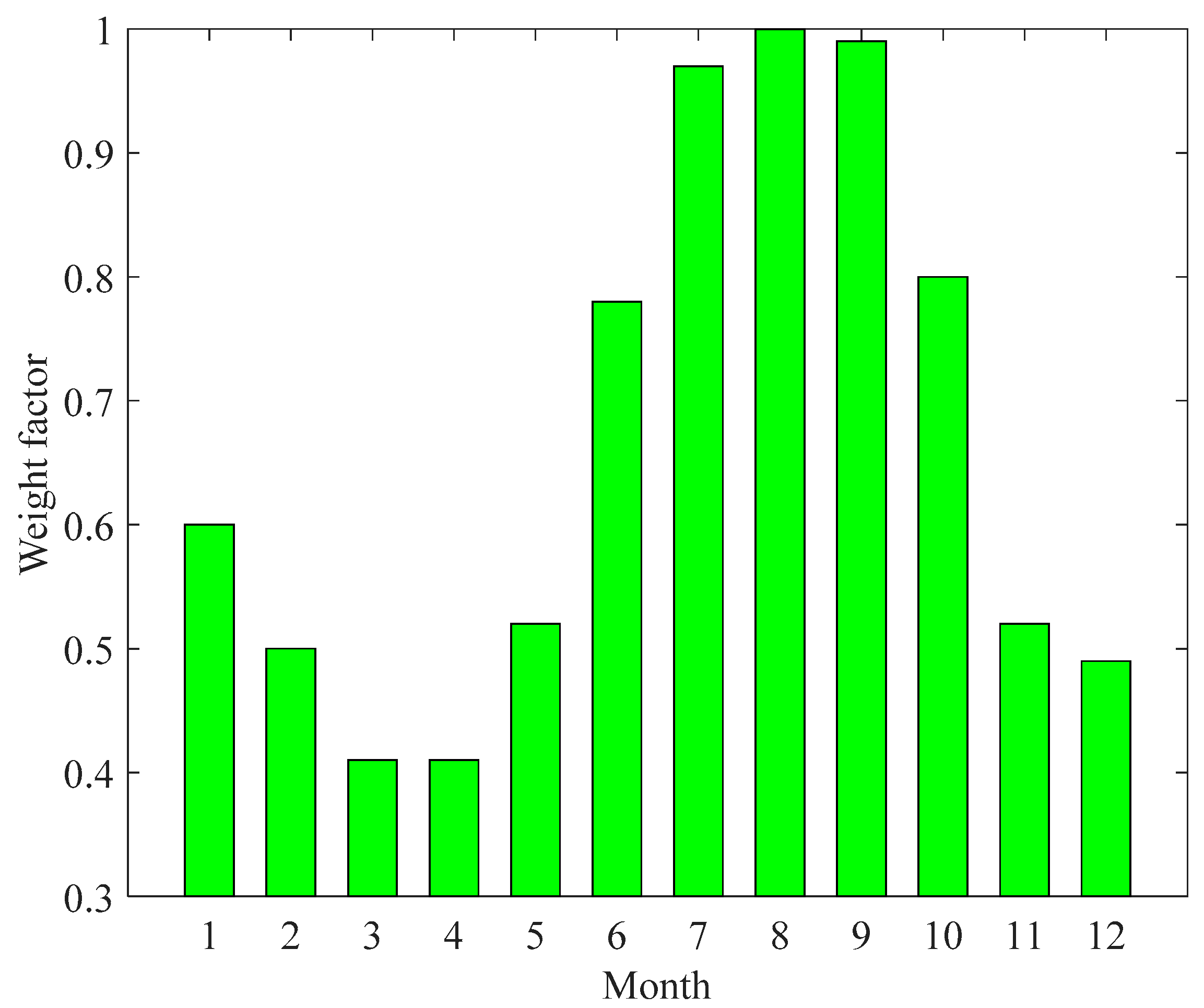
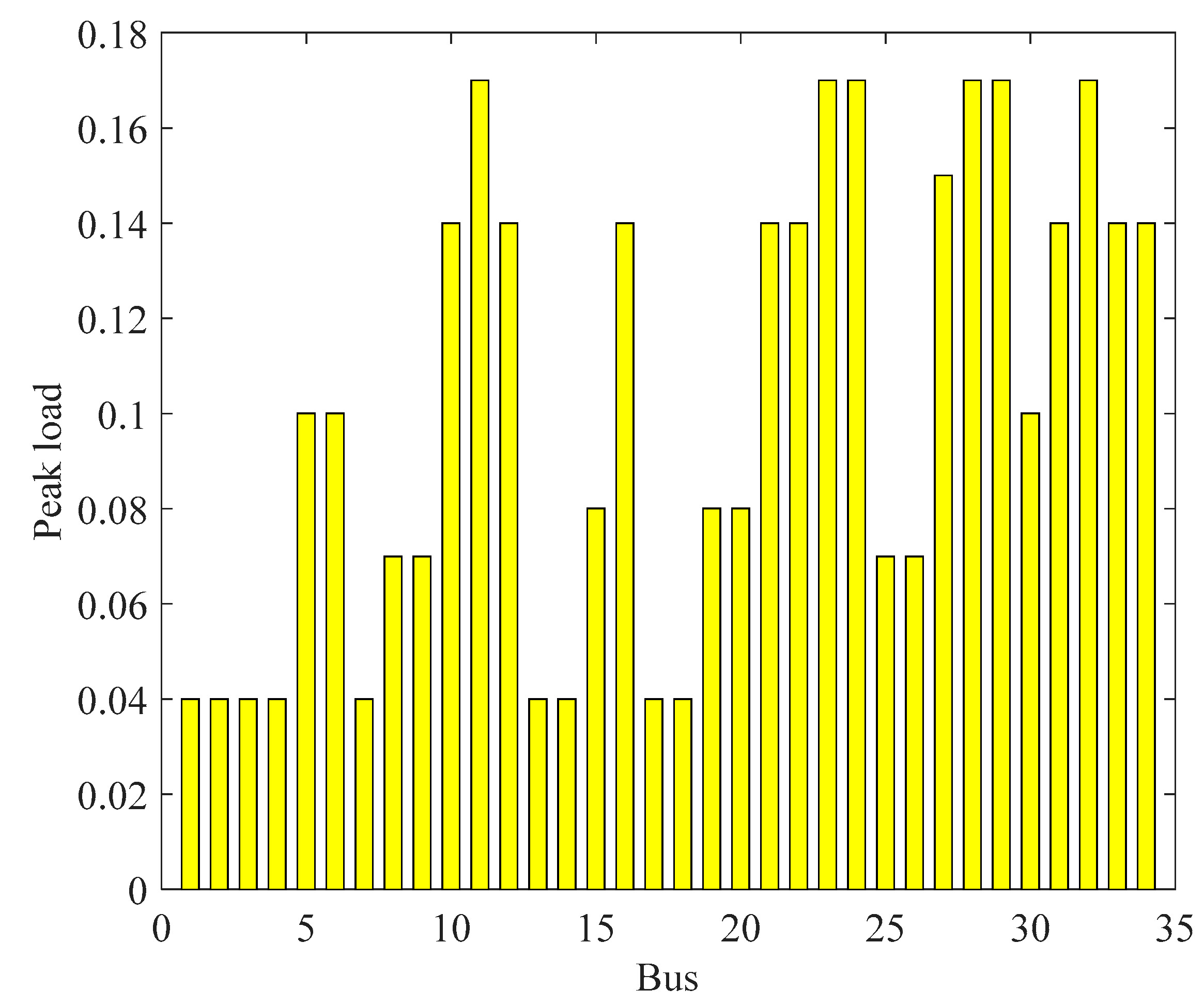
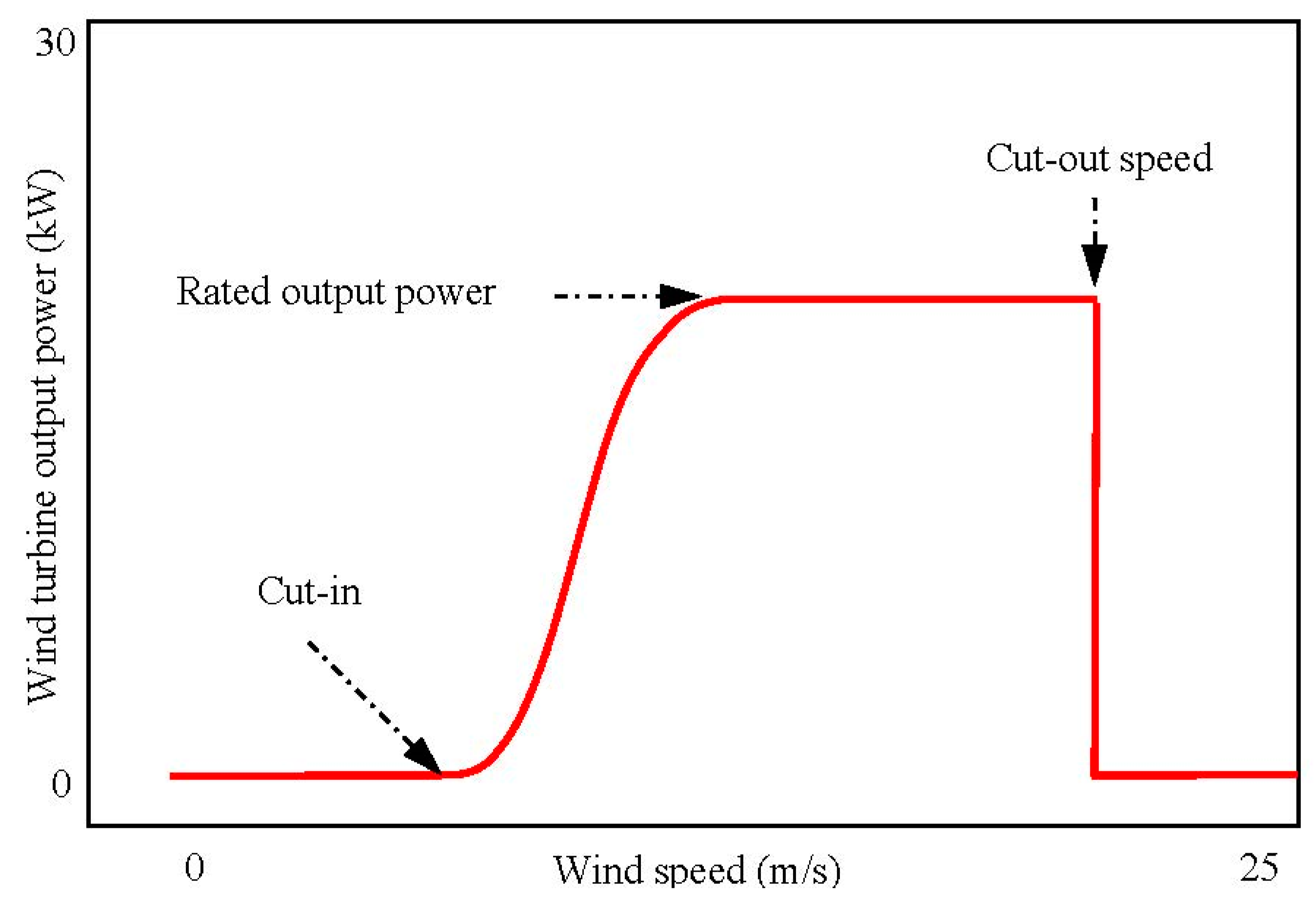
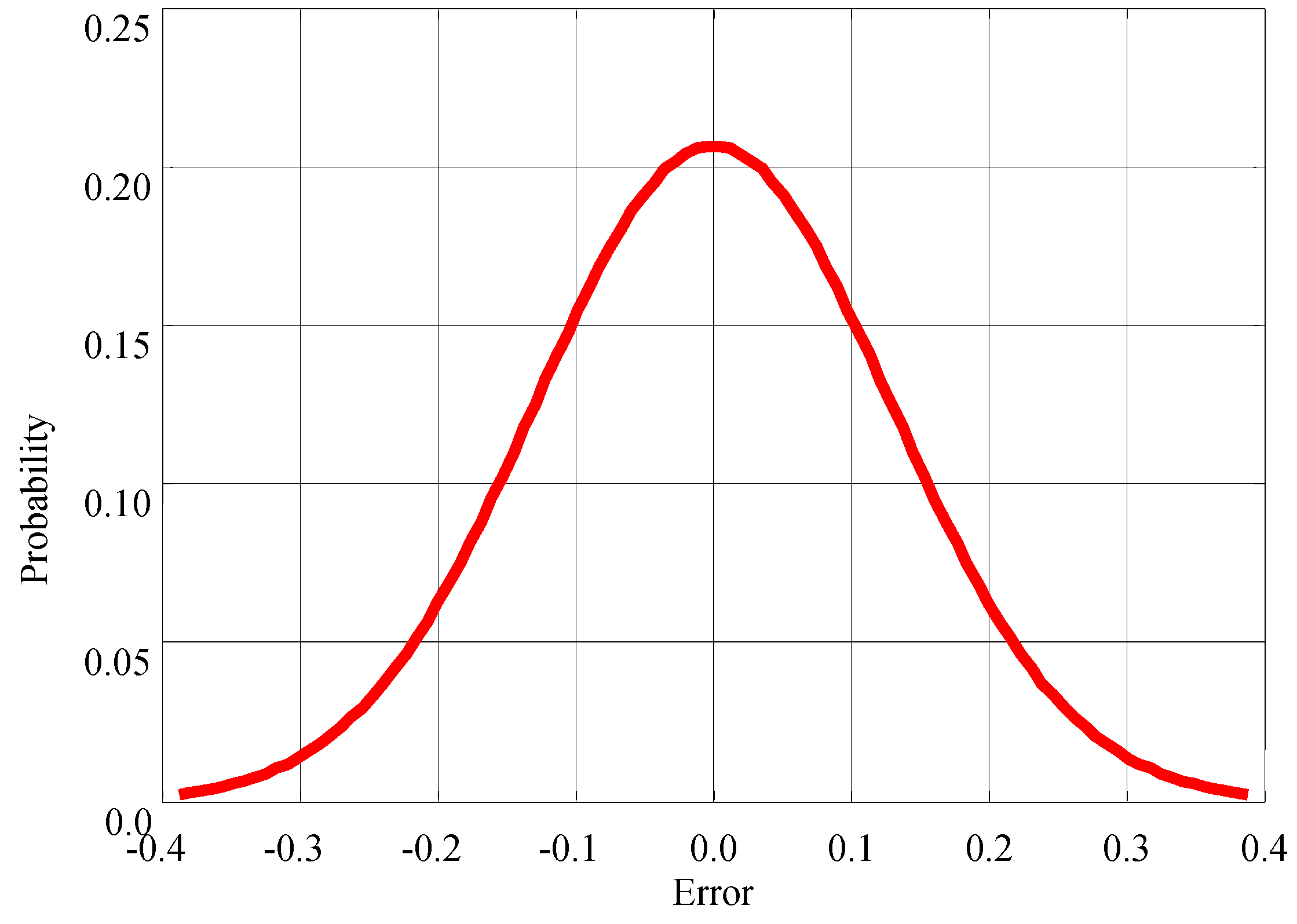
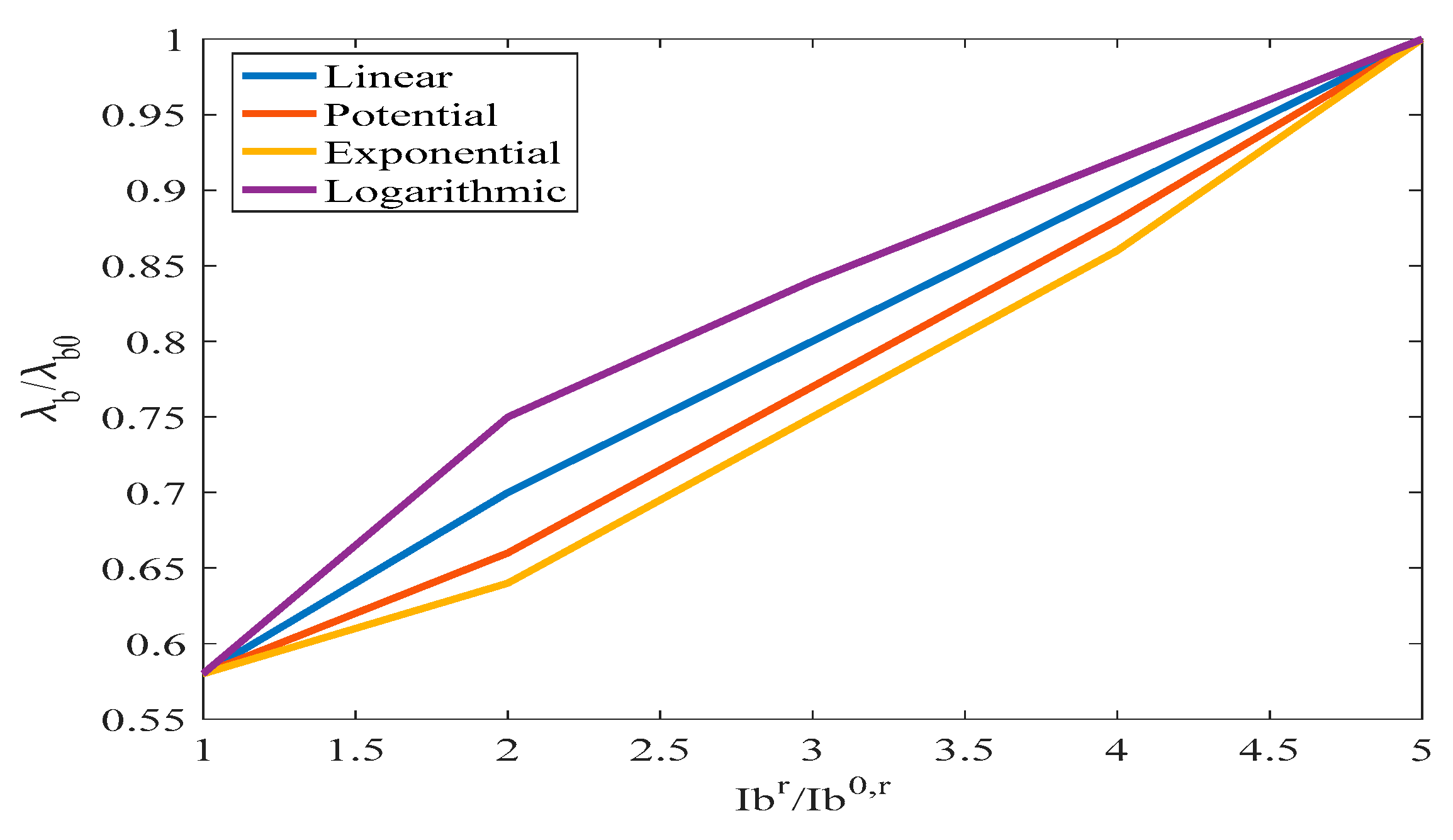
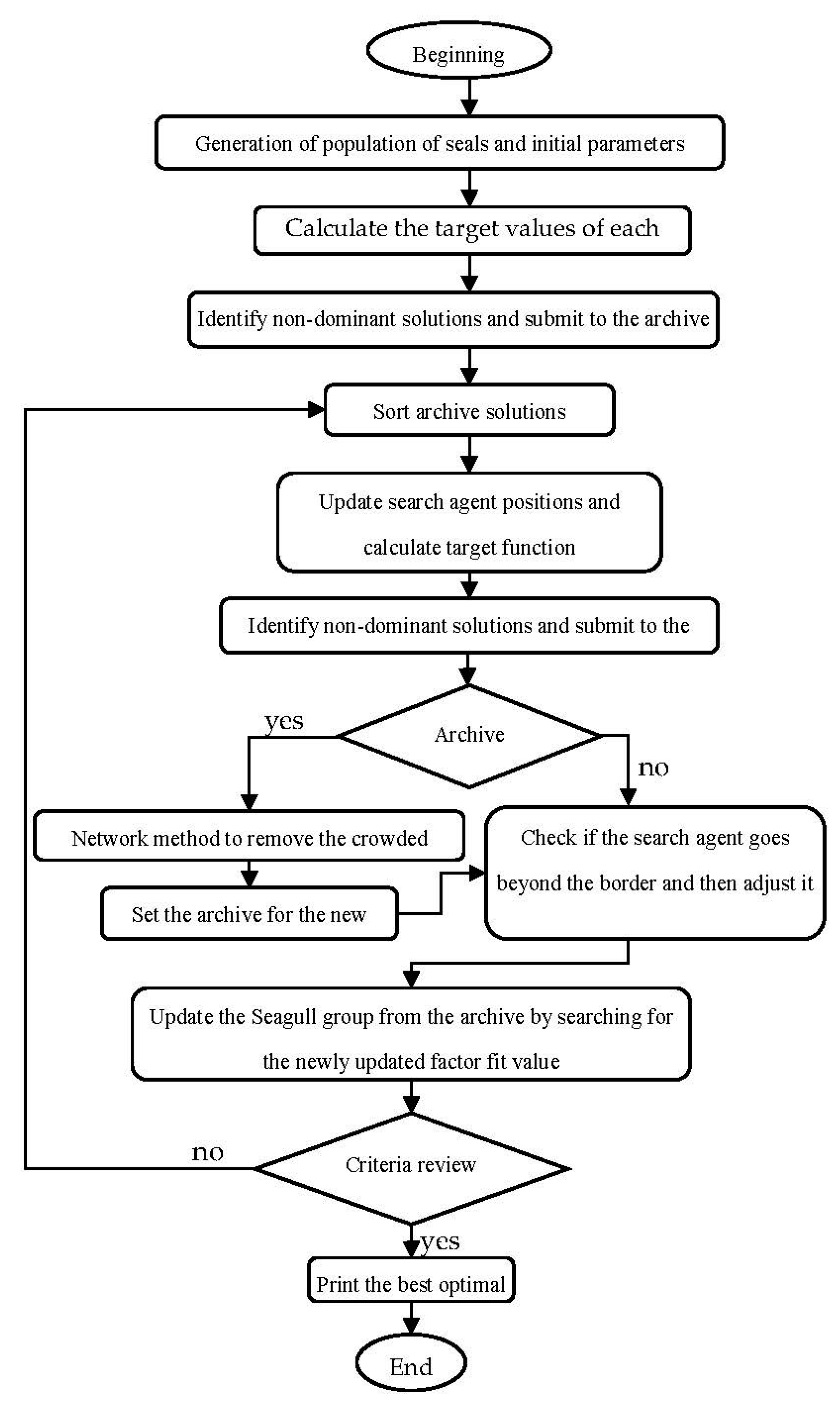
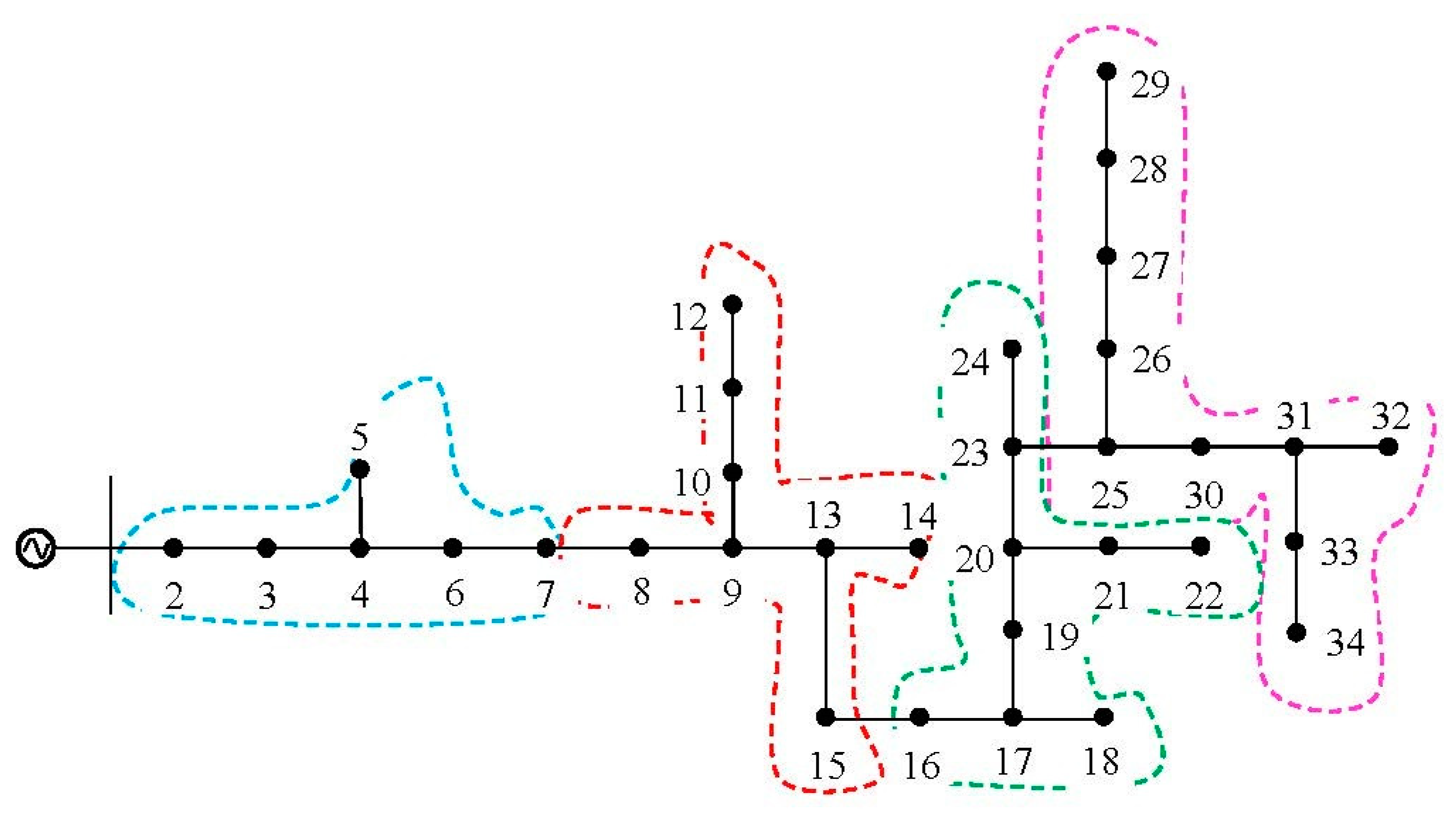
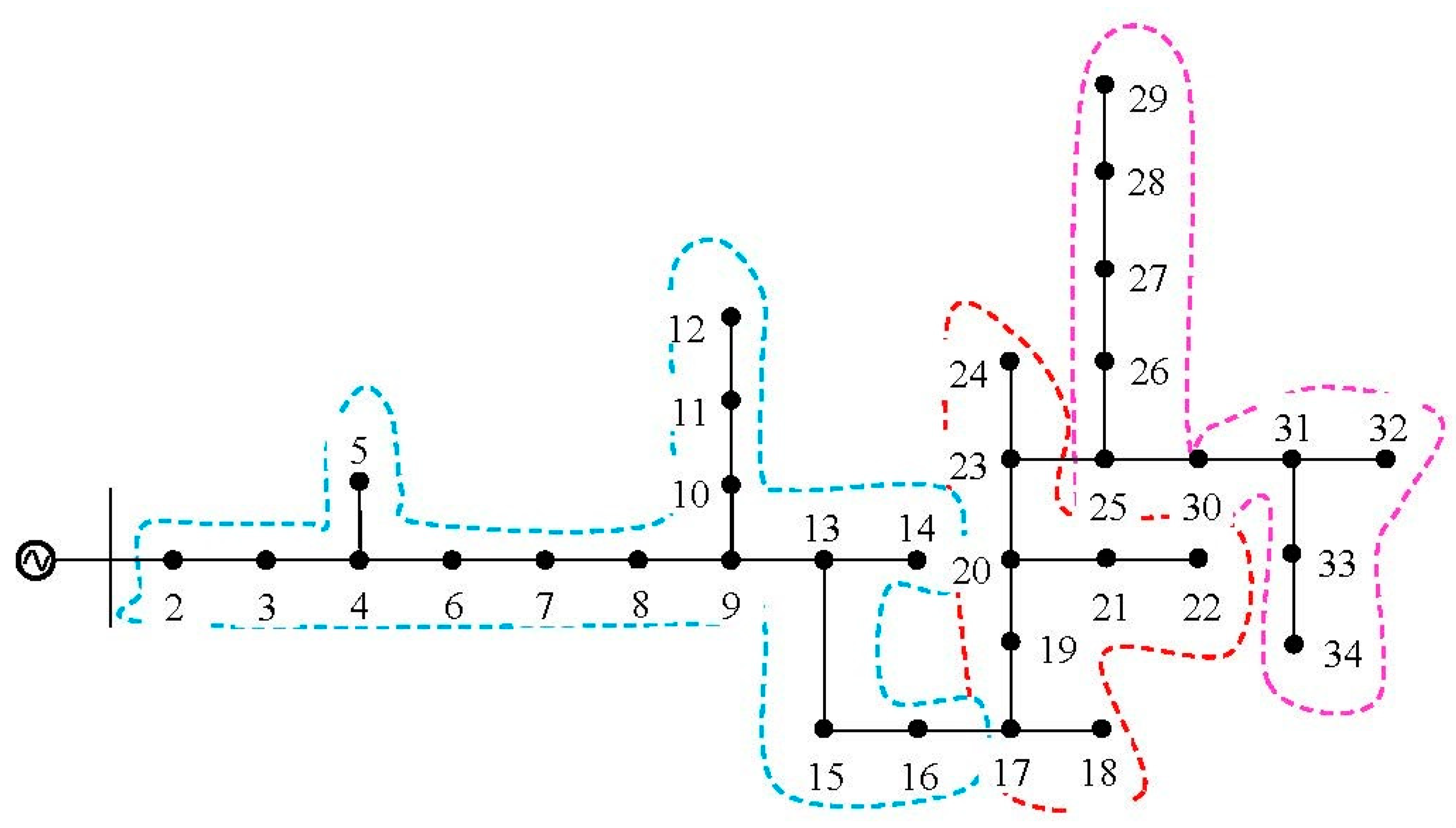
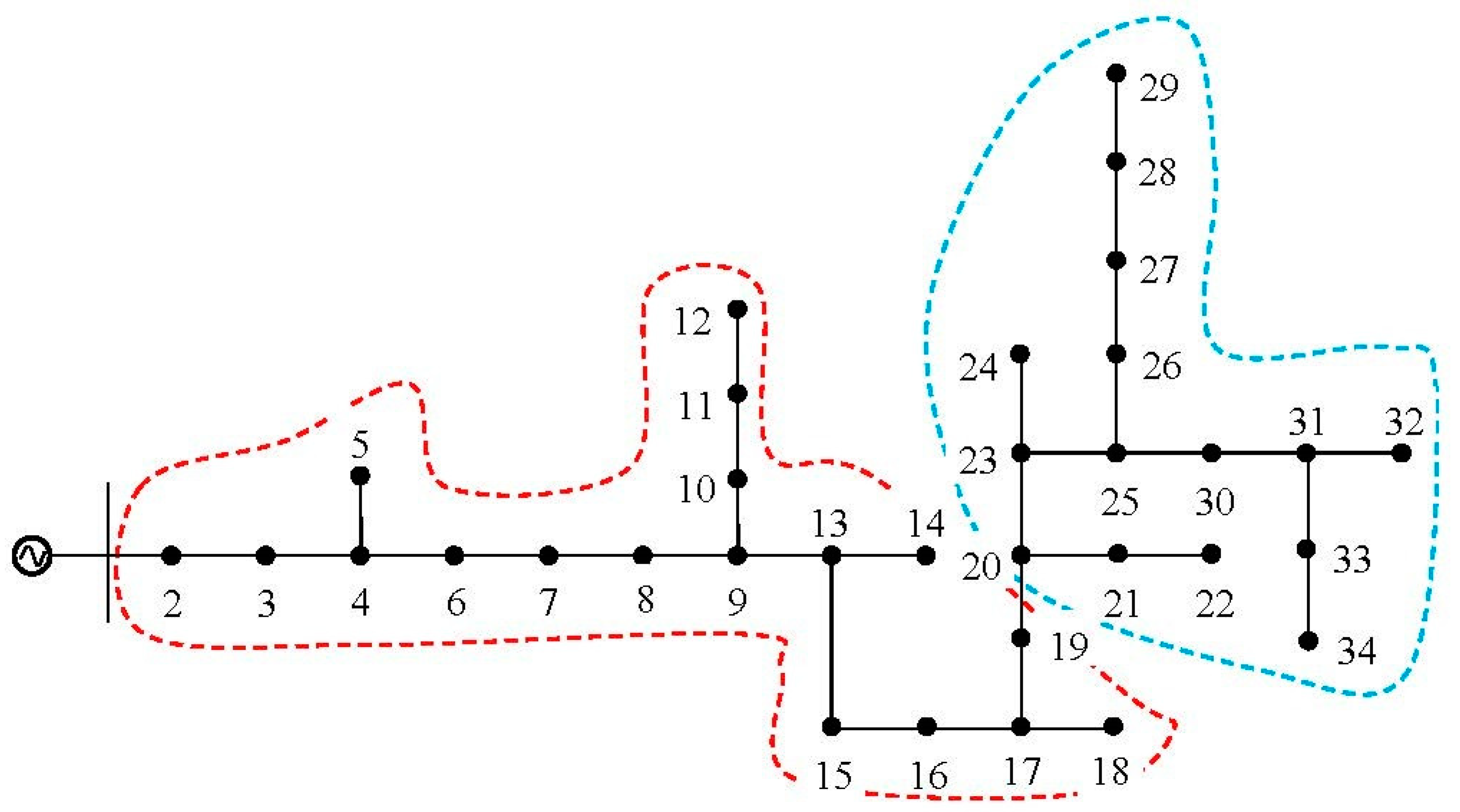
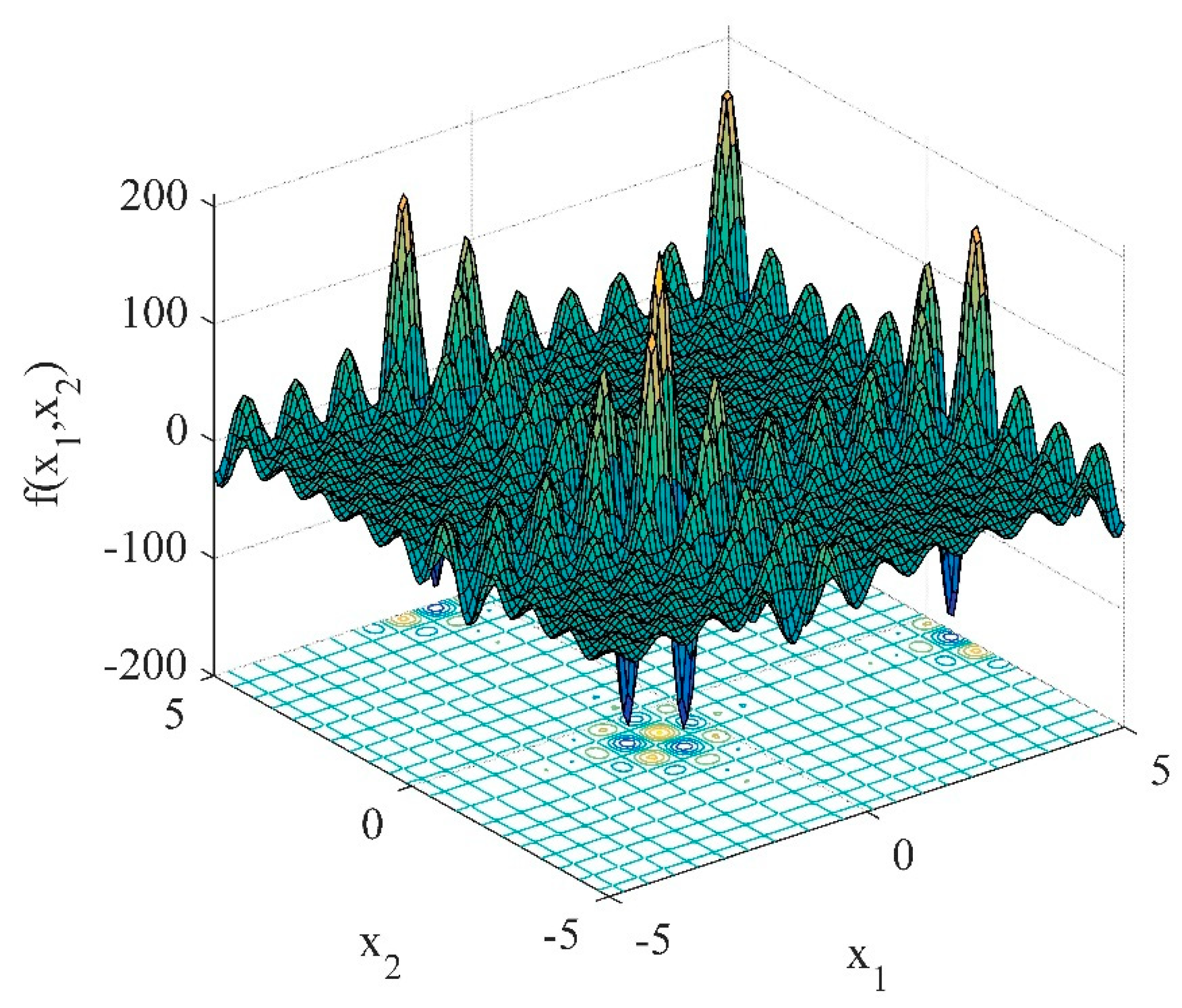
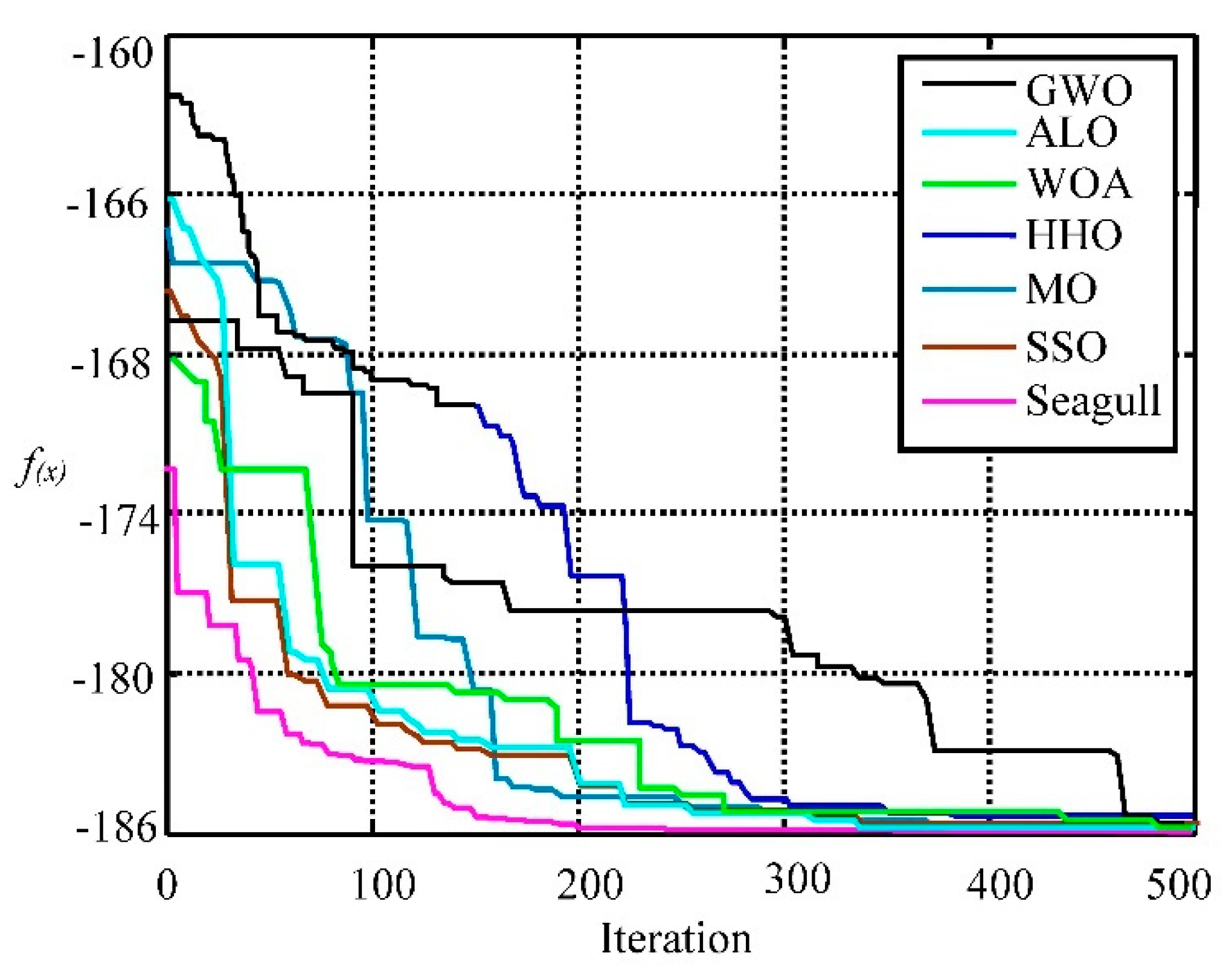
| ) | 1500 | 6675 | - |
| ) | 750 | 600 | 1000 |
| Annual interest rate | 1 | 1 | - |
| ) | 20 | 20 | - |
| Power factor | 1 | 1 | Variable |
| 0 | 0 | - | |
| 0/005 | 0/005 | - |
| Type of Load | Amount | Percentage | |
|---|---|---|---|
| 70% | |||
| Normal (Active) | 30% | ||
| 70% | |||
| 30% |
| Microgrid | Source Size Q | ||||
|---|---|---|---|---|---|
| 1 | 3, 4 | 500, 300 | 2 | 440 | |
| 2 | 8, 11 | 432, 498 | 12 | 439 | |
| 3 | 17, 20 | 476, 300 | 23, 21 | 495, 600 | |
| 4 | 25, 28, 33 | 421, 532, 602 | 34, 33 | 456, 575 |
| Microgrid | ||||
|---|---|---|---|---|
| 1 | 47.32 | 7.18 | 47.18 | 9.32 |
| 2 | 42.72 | 5.03 | 38.53 | 6.45 |
| 3 | 21.95 | 3.43 | 22.07 | 4.57 |
| 4 | 18.74 | 4.65 | 17.84 | 3.53 |
| Microgrid | |||||
|---|---|---|---|---|---|
| 1 | 11, 7, 5, 2 | 332, 386, 342, 632 | 2 | 453, 322 | |
| 2 | 25, 23, 22 | 268, 332, 564, 621 | 321, 298 | ||
| 3 | 35, 31, 27, 25 | 267, 432, 610, 457 | 465, 298 |
| Microgrid | ||||
|---|---|---|---|---|
| 1 | 88.32 | 11.29 | 92.32 | 17.25 |
| 2 | 42.21 | 8.52 | 43.54 | 5.64 |
| 3 | 15.54 | 3.32 | 20.86 | 3.68 |
| Microgrid | |||||
|---|---|---|---|---|---|
| 1 | 2, 5, 6, 7, 15 | 473, 387, 498, 428, 592, 445 | 8, 2 (FC),16 (FC) | 387, 399, 386 | |
| 2 | 16, 24, 26, 31, 34 | 427, 489, 433, 429, 459 | 17 (FC), 27 (FC), 33 (FC), 34 | 400,395,376,310 |
| Microgrids | ||||
|---|---|---|---|---|
| 1 | 16/52 | 24/23 | 175/57 | 30/36 |
| 2 | 55/83 | 8/89 | 56/23 | 8/19 |
| Number of Microgrids | Total Cost | Losses | ||
|---|---|---|---|---|
| 2 | 23.15 | 2.54 | 91.10 | 3.12 |
| 3 | 17.12 | 3.12 | 54.029 | 3.24 |
| 4 | 32.16 | 4.87 | 148.09 | 5.89 |
| Type of Operation | Error (%) | ||||
|---|---|---|---|---|---|
| Traditional distribution system | 5 | 142.21 | 19.32 | 144.32 | 25.28 |
| 18 | 75.24 | 10.24 | 81.54 | 12.65 | |
| 30 | 27.06 | 4.57 | 25.75 | 4.32 | |
| Microgrid | 5 | 101.45 | 13.67 | 112.15 | 15.51 |
| 18 | 64.79 | 6.13 | 71.28 | 10.78 | |
| 30 | 26.37 | 3.25 | 26.32 | 4.32 |
| C(B1,B2) | C(B2,B1) | C(B1,B3) | C(B3,B1) | C(B1,B4) | C(B4,B1) | |
|---|---|---|---|---|---|---|
| Best | 0.752 | 0.0038 | 0.524 | 0.0214 | 0.501 | 0.0318 |
| Average | 0.683 | 0.001112 | 0.502 | 0.0238 | 0.483 | 0.0315 |
| Std | 0.0029 | 0.00012 | 0.0036 | 0.00021 | 0.00221 | 0.00012 |
Publisher’s Note: MDPI stays neutral with regard to jurisdictional claims in published maps and institutional affiliations. |
© 2022 by the authors. Licensee MDPI, Basel, Switzerland. This article is an open access article distributed under the terms and conditions of the Creative Commons Attribution (CC BY) license (https://creativecommons.org/licenses/by/4.0/).
Share and Cite
Wang, Z.; Geng, Z.; Fang, X.; Tian, Q.; Lan, X.; Feng, J. The Optimal and Economic Planning of a Power System Based on the Microgrid Concept with a Modified Seagull Optimization Algorithm Integrating Renewable Resources. Appl. Sci. 2022, 12, 4743. https://doi.org/10.3390/app12094743
Wang Z, Geng Z, Fang X, Tian Q, Lan X, Feng J. The Optimal and Economic Planning of a Power System Based on the Microgrid Concept with a Modified Seagull Optimization Algorithm Integrating Renewable Resources. Applied Sciences. 2022; 12(9):4743. https://doi.org/10.3390/app12094743
Chicago/Turabian StyleWang, Zhigao, Zhi Geng, Xia Fang, Qianqian Tian, Xinsheng Lan, and Jie Feng. 2022. "The Optimal and Economic Planning of a Power System Based on the Microgrid Concept with a Modified Seagull Optimization Algorithm Integrating Renewable Resources" Applied Sciences 12, no. 9: 4743. https://doi.org/10.3390/app12094743
APA StyleWang, Z., Geng, Z., Fang, X., Tian, Q., Lan, X., & Feng, J. (2022). The Optimal and Economic Planning of a Power System Based on the Microgrid Concept with a Modified Seagull Optimization Algorithm Integrating Renewable Resources. Applied Sciences, 12(9), 4743. https://doi.org/10.3390/app12094743






